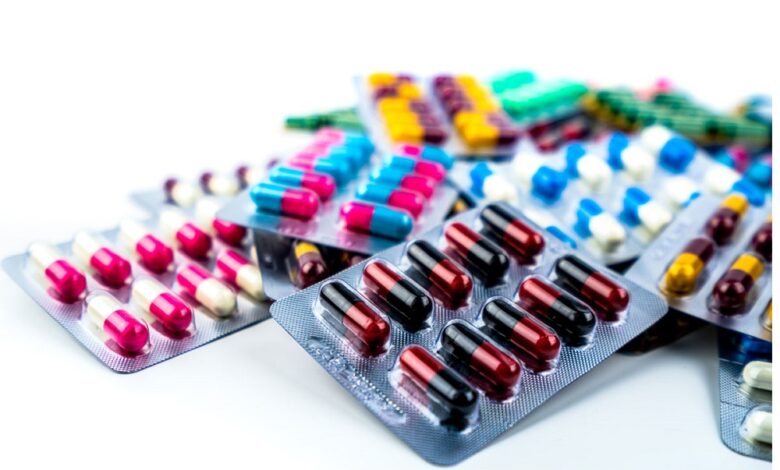AMR, a silent ‘pandemic’ waiting to happen
Since their discovery in the 1920s, antibiotics have been the main arsenal that medical science has resorted to in order to prevent and treat infections and diseases in humans, animals and plants. Although hailed as one of the greatest medical advancements in history, the overuse and misuse of antibiotics have created a new challenge for health care providers — antimicrobial resistance, or AMR for short.

Antibiotic or antimicrobial resistance occurs when bacteria change and no longer respond to the medications that once killed them or slowed their growth. These drug-resistant bacteria may multiply and spread, putting people at risk of more serious infections that are difficult, or even impossible, to treat. AMR has grown to become a multi-faceted global challenge known as a lurking silent pandemic. It is considered one of the top ten global public health threats to humanity in the 21st century.
According to the World Health Organization, globally, an estimated 1.3 million people die each year directly due to bacterial AMR. The global health entity warned that if no action is taken, this number could soar dramatically, leading to higher public health, economic and social costs and pushing more people into poverty, especially in low-income countries.
To address the increasing threats and impacts of antimicrobial resistance globally, the United Nations launched the Antimicrobial Resistance Multi-Stakeholder Partnership in 2022. The partnership seeks to bring about greater coordination, political leadership, interdisciplinary and multi-sectoral targeted actions by the whole of society. In support of this initiative, we as individuals must also do our part to reduce antibiotic resistance.
Below are a few basics on AMR and what we can do to reduce the impact of this potential threat to all life forms on Earth.
Antibiotic resistance does not imply that your body is resistant to antibiotics; it means that the bacteria causing an infection are unaffected by the antibiotic treatment. Bacteria have been around long before the arrival of the human species on the evolutionary ladder, evolving into different strains in response to the changing environment they encountered over the eons. Only those bacteria that could survive and even thrive in the presence of adverse conditions continued to multiply and pass on the resistant traits in their genetic material to other bacteria.
In recent decades, bacteria have begun to adapt and overcome many of the antibiotics developed to prevent their infection of humans, animals and plants. To survive modern antibiotics, bacteria have developed several defensive mechanisms such as producing enzymes that destroy the antibiotic; changing the structure of their cell wall so the antibiotic cannot attach to it; pumping the antibiotic out of their cells before it has a chance to work; or by restricting access so the antibiotic cannot enter the cell membrane.
If bacteria develop a combination of these resistance mechanisms, it could mean that multiple or all antibiotics prove ineffective against them, leading to untreatable infections. Once antibiotic resistance emerges, it can spread rapidly and easily to other people and to other healthcare facilities such as hospitals, clinics, and even between countries.
The development of antibiotic resistance in bacteria was aided to a large extent by how people used antibiotics, including through the underuse, overuse and misuse of antibiotics. Medical practitioners who prescribe antibiotics inappropriately , patients who use antibiotics without heed to the dosage prescribed, farmers and livestock owners who overuse antibiotics to protect crops and cattle, have all contributed to the growing menace of AMR.
Overuse: Overusing antibiotics drives the evolution of antibiotic resistance. When populations take antibiotics unnecessarily, it gives bacteria more opportunities to become resistant. Because bacteria can inherit genes from relatives and nonrelatives, it allows them to transfer antibiotic resistance to different species of bacteria. Also, some mutations that cause resistance can occur randomly.
Misuse: Bacteria multiply at any opportunity. Therefore, not taking antibiotics according to your doctor’s instructions allows resistant bacteria to grow. This includes missing doses; stopping the course early; using the incorrect dosage.
Bacteria can reproduce and mutate if you use unsuitable antibiotics, such as someone else’s medicine. If antibiotics only partially kill the bacteria, they survive and multiply, and the population of drug-resistant bacteria grows.
Inappropriate prescribing: Research shows that doctors prescribe antibiotics unnecessarily up to 50 percent of the time. Good antibiotic stewardship involves a correct diagnosis of the condition requiring treatment and the proper choice of antibiotic and course duration. Incorrectly prescribed antibiotics may expose people to potential complications. Moreover, if the prescribed therapy does not inhibit the bacteria, it can promote antibiotic resistance by allowing the bacteria to mutate.
Extensive agricultural use: Around the world, farmers use antibiotics as animal growth supplements and to prevent disease. Increasingly, antibiotics are being sold to produce larger yields and better products from livestock. The antibiotics used in animals also kill or suppress susceptible bacteria, allowing antibiotic-resistant bacteria to thrive. As a result, when people eat meat or products from animals treated with antibiotics, they encounter resistant bacteria. These bacteria can then cause infections that are difficult to treat.
Agricultural antibiotic use also affects the balance of bacteria in the environment. Animals excrete almost all antibiotics in their waste, which disperses through fertilizer, groundwater, and surface runoff. Microorganisms in the environment then become exposed to resistant bacteria, which alters the delicate balance of the ecology.
Everyone can play their part in helping prevent antibiotic resistance. Here are some tips:
- Patients should take antibiotics only as directed by your doctor and follow any other instructions they provide. This includes taking the full course of treatment as prescribed, even if you feel better before the end. Remember to take your doses on time. Do not take someone else’s medications or use leftover antibiotics. Do not use antibiotics to try to treat viral illnesses, such as colds or the flu.
- Doctors and healthcare providers can also help by: Prescribing antibiotics responsibly and only when needed. Using antibiotics that suit the specific bacteria involved. Only prescribing antibiotics for as long as necessary. Using good hygiene to control the spread of infections in clinics and hospitals.
- Reducing the use of antibiotics in livestock is also important. This involves using vaccines and other preventive measures to keep animals healthy and only using antibiotics when necessary. Farmers and ranchers should also follow instructions carefully when using antibiotics and only use them on the advice of a veterinarian.












